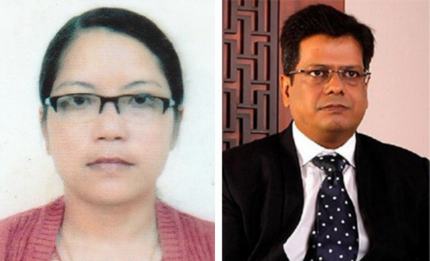Premenstrual Syndrome (PMS) – Causes, Symptoms, Diagnosis & Treatment

Dr. N. Romita Devi
Fellow Infertility Specialist
Dr. Deepak Goenka
Director, Institute of Human Reproduction
IVF Specialist
What is Premenstrual Syndrome (PMS)?
PMS stands for Premenstrual Syndrome. The physical or mood changes a woman goes through every month before menstruation which affects a woman’s normal life is called premenstrual syndrome (PMS). PMS has been reported in 30-40% of the reproductive female population.
What changes do we notice in PMS?
During PMS, a woman may undergo emotional changes such as:
- Depression
- Angry outbursts
- Irritability
- Crying spells
- Anxiety
- Confusion
- Social withdrawal
- Poor concentration
- Insomnia
- Increased nap-taking
- Changes in sexual desire.
What are the symptoms of PMS?
Physical symptoms of PMS include:
- Thirst and appetite changes (food cravings)
- Breast tenderness
- Bloating and weight gain
- Headache
- Swelling of the hands or feet
- Aches and pains
- Fatigue
- Skin problems like acne
- Gastrointestinal symptoms
- Abdominal pain.
What causes PMS?
The cause of PMS is not clearly known. Women with PMS are thought to be more sensitive to normal levels of a hormone known as progesterone, which is secreted after a woman ovulates. Serotonin, a hormone that contributes to feelings of happiness and regulates mood is found to be low in a woman with PMS. Low serotonin levels can also contribute to symptoms of insomnia, tiredness and food cravings. Research has shown that obese woman is more likely to have PMS.
How to diagnose PMS?
To be called PMS, a woman needs to have these physical symptoms and emotional changes present in the 5 days before a period for at least three menstrual cycles in a row; end within 4 days after a period starts and interfere with some normal activities.
What is Premenstrual Dysphoric Disorder (PMDD)? Is PMS similar to Premenstrual Dysphoric Disorder (PMDD)?
When PMS becomes very severe and affects personal and work relationships, we call it PMDD.
What test do we need to do to diagnose PMS?
There is no laboratory test to positively diagnose PMS.
When to seek treatment for PMS?
If the symptoms are mild to moderate, lifestyle and diet changes can help. When symptoms are severe and begin to interfere with our daily life, medical treatment is needed.
Role of mobile app in PMS
Me V PMDD is a mobile app which uses a scale system to track data behind moods, emotions, feelings (panic attacks, trouble focusing) and physical effects like nausea, low energy, acne, and packages it so that you can see hormonal changes easier. Period Diary is another app which has more than 30 PMS symptoms and 20 moods available to track and sync with your phone’s calendar. Cycles and many others are also tracker apps designed to track PMS symptoms.
Treatment for PMS
Lifestyle changes:
- Regular exercises
- Relaxation therapy as yoga, meditation, breathing exercise, and massage therapy
- Regular sleeping habits
- Eating foods rich in complex carbohydrates such as whole grains, pasta, brown rice, etc.
- Adding calcium-rich foods, like yogurt and leafy green vegetables
- Reduce fat, sugar and salt intake
- Avoiding caffeine and alcohol
- Eating frequent small meals.
- When lifestyle changes do not alleviate the symptoms, you need to consult an Obs – Gyn doctor. The doctor may advise you to have dietary supplements and medical therapy.
Dietary supplements which may help in reducing the symptoms include:
- 1,200 milligrams (mg) of calcium a day can help reduce physical and mood symptoms.
- Magnesium supplements may help reduce water retention (“bloating”), breast tenderness, and mood symptoms.
- Vitamin E.
Medications for PMS:
Medical therapy is needed when a woman has severe symptoms. Medications which are commonly used include:
- Drugs to prevent ovulation as birth control pills.
- Antidepressants (SSRIs) can help lessen mood symptoms. They can be used 2 weeks before the menses and can be continued throughout the menses.
- Antianxiety drugs can be tried when other therapies do not work.
- NSAIDS as ibuprofen can help reduce pain symptoms.
- Diuretics may be prescribed if water retention is a major problem.
PMS is an important but often neglected medical disorder which disturbs the physical and mental well-being of a woman. It can be managed with proper lifestyle changes, dietary supplements and medical therapy.
To know more, Consult our experts

.png) (+91) 9864103333
(+91) 9864103333 (+91) 9435502020
(+91) 9435502020



